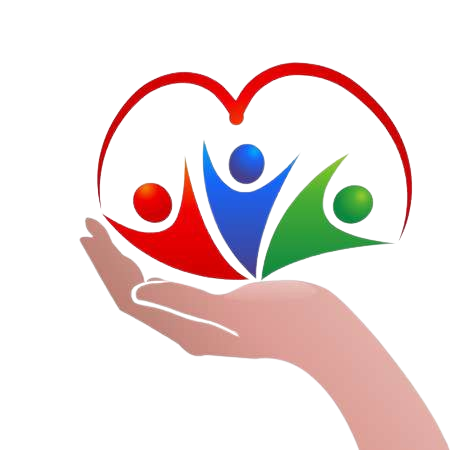Nutrition writer Ariane Lang, BSc, MBA, shares how her understanding of healthy eating has evolved, what challenges she’s faced, and her personal strategies for making balanced eating a little easier.

If you ask a group of people what “healthy eating” means, you’ll likely hear a different response from each person.
For some, it’s about cutting back on fast food or adding more fruits and vegetables. For others, it might mean giving themselves permission to enjoy dessert without guilt.
Those managing medical conditions or food allergies may also have their own unique definition of what it means to eat well.
In other words, there’s no one-size-fits-all approach to healthy eating.
Healthy eating is a human experience, and as individuals, we all have our own needs and preferences — and these naturally influence our food choices.
Plus, your idea of healthy eating may shift over time as your body, goals, and lifestyle change.
This article highlights the human aspect of eating well and shares some of my go-to strategies for keeping it simple and sustainable.
What Healthy Eating Means to Me
Over the years, my view of healthy eating has changed several times.
Back in college, I followed nutrition guidelines to the letter. My meals became all about nutrients rather than enjoyment. For example, instead of simply seeing a plate of traditional Costa Rican gallo pinto (rice and beans), I saw complex carbs and plant-based proteins.
Later, when I became a practicing nutritionist, I felt pressure to look a certain way — as if a dietitian should fit into a specific body type. That led me to track and measure everything I ate, making sure I was hitting every nutrient target.
Even though I was technically fueling my body with everything it needed, I wasn’t considering how eating made me feel emotionally or socially. Food is tied to culture and connection, and that enjoyment matters, too.
These days, I’ve adopted a more flexible, balanced mindset.
I no longer obsess over whether something is animal- or plant-based, or whether a carb is simple or complex. I aim to include all food groups in my meals, without strict measurements or tracking.
Now, healthy eating for me means having variety, enjoying what I eat, and leaving space for occasional indulgences — sweets, fast food, and dessert — all without guilt or strict rules.
As you can see, finding my balance took time. My personal definition of healthy eating evolved with each phase of life.
Ultimately, as long as you’re nourishing your body and tuning into its signals, your version of healthy eating can — and should — reflect your own reality.
Looking at the Bigger Picture
Just like many other parts of life, eating well doesn’t always go according to plan.
Sometimes, I work late or feel too tired to cook — and yes, I’ll order takeout and fully enjoy it.
For me, flexibility is part of what makes eating healthy realistic. Being able to adjust to the moment is often necessary.
When I’m choosing food on the fly, I try to make the best decision from what’s available — maybe something like a salad, a grain bowl, or a simple sandwich. But if I’m craving pizza, I’ll go for it and enjoy that, too.
It helps to keep the bigger picture in mind. No single meal defines your health. What truly matters is the pattern of choices you make over time.
A friend once shared a saying I always remember: “One bad meal won’t make you unhealthy, just as one good meal won’t make you healthy.”
It’s Not Always Easy
Many people assume that because I’m a dietitian, healthy eating comes naturally. But I’m just as human as anyone else — I love desserts and have cravings, too.
One of my toughest personal challenges came when I had to drastically cut back on carbs due to recurrent infections.
Carbs are found in so many nutritious foods — grains, legumes, fruits, vegetables, and dairy — not to mention processed foods and sweets.
While the goal was to reduce refined carbs, I ended up limiting nearly all carb-rich foods, even healthy options like whole wheat bread, starchy vegetables, and dairy.
What was left? Fruits, oats, quinoa, and legumes like lentils, beans, chickpeas, and edamame.
People often assumed this change would be easy for me, but it wasn’t. Adjusting to this new way of eating, especially while eating out or planning snacks, was a real challenge.
What helped me most was staying organized and being creative with meals.
3 Daily Habits That Make Healthy Eating Easier
For me, healthy eating is about making thoughtful choices — and making those choices as easy as possible.
Here are three habits I use regularly that support my eating goals:
1. Meal Prep
It might sound like a cliché, but meal prepping really makes a difference.
Since cooking can be time-consuming, having meals ready to go means I can eat something nutritious in just a few minutes.
Each week, I cook a batch of lean protein — usually chicken or something similar — and freeze it in portions. I defrost what I need as I go.
I also prep vegetables ahead of time to make sure they’re easy to grab and cook. To keep things interesting, I prepare them in a variety of ways — sliced, grated, diced, or spiralized.
2. Keep Fruit Visible
Having fruit in plain sight reminds me to eat it more often.
Studies show that we tend to eat more of the foods that are most visible and easily accessible — whether that’s fruit or candy.
I use that principle by leaving fruit out on the table and keeping snacks and sweets tucked away.
3. Stick to a Routine
While I don’t create a strict weekly meal plan, I do have a handful of go-to dishes I rotate through for each meal.
For breakfast, I usually choose from:
-
Gallo pinto and eggs
-
Toast with peanut butter and eggs
-
Oatmeal with fruit
-
Oatmeal pancakes
The same goes for lunch, dinner, and snacks. Having a set of reliable meals saves time and lets me choose based on my mood — whether I want something savory or sweet.
It also makes grocery shopping easier because I know what ingredients I’ll use most often.
Final Thoughts
We’re all growing and evolving, and our approach to healthy eating should grow with us.
In this article, I’ve shared how my own definition of healthy eating has shifted over time, the biggest challenge I’ve faced, and the simple habits that support my lifestyle.
But my approach isn’t the “right” way — it’s just what works for me.
Healthy eating is deeply personal. It should reflect your body, your needs, and your circumstances. Think about what changes you could make in your own routine to support your version of a healthy lifestyle.
And if you’re feeling unsure about where to begin, working with a registered dietitian can be a helpful step toward building a realistic and nourishing plan that fits your life.

